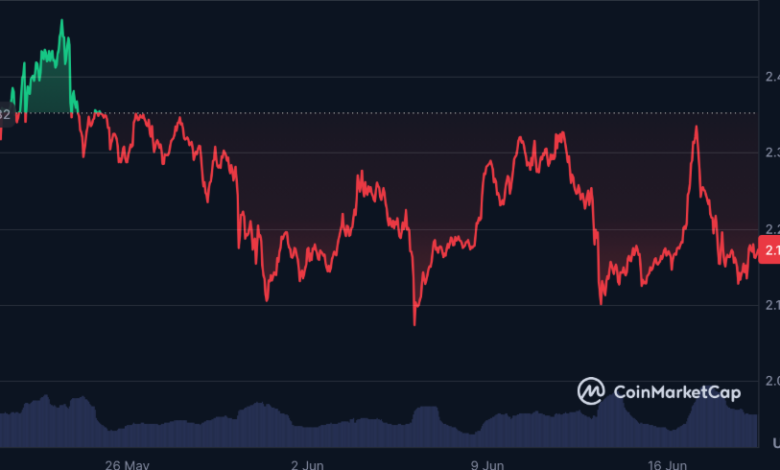Understanding XRP Price USD Fluctuations: What Drives the Market?

The cryptocurrency market is known for its volatility, with the prices of digital assets like Bitcoin, Ethereum, and XRP often experiencing dramatic fluctuations. In particular, xrp price usdt fluctuations have caught the attention of investors and traders around the globe. This article dives into the factors that influence the price of XRP in USD and provides a comprehensive understanding of the dynamics that drive its market movements.
What is XRP and Why Does Its Price Matter?
XRP is a digital asset and the native cryptocurrency of the Ripple network, which was created to facilitate fast and low-cost international transactions. Ripple aims to revolutionize the global payments system by providing financial institutions with an alternative to traditional banking methods. As a result, XRP has become a popular asset among investors, banks, and payment processors.
The XRP price USD is the value at which XRP trades against the US Dollar. Since XRP is used for cross-border payments, its price is often influenced by the adoption of Ripple’s technology and the demand for quick and cheap transactions.
Factors That Drive XRP Price USD Fluctuations
1. Market Sentiment and Investor Speculation
The price of XRP, like most cryptocurrencies, is heavily influenced by market sentiment. Cryptocurrencies are largely speculative investments, and their value can rise or fall depending on the emotions and expectations of investors. Positive news, such as institutional adoption or Ripple’s partnerships with major financial institutions, can lead to an increase in XRP’s price. Conversely, negative news, such as regulatory challenges or security concerns, can cause a sharp drop.
For example, when Ripple secured partnerships with major financial institutions, the XRP price USD surged, reflecting optimism about the future utility of the cryptocurrency. However, regulatory battles, such as the ongoing lawsuit with the U.S. Securities and Exchange Commission (SEC), have led to periods of price volatility.
2. Supply and Demand Dynamics
The fundamental economic principle of supply and demand plays a significant role in XRP price USD fluctuations. Ripple has created a fixed supply of 100 billion XRP coins, with a large portion held by the company itself. This limited supply creates scarcity, which can drive up the price as demand increases.
However, Ripple periodically releases more XRP tokens into circulation through its escrow system, which can impact the available supply. If too much XRP enters the market at once, it could cause the price to fall. Conversely, if the release is limited and demand rises, XRP’s price will likely increase.
3. Regulatory Environment
Regulatory uncertainty is one of the biggest challenges for cryptocurrencies, including XRP. Governments and regulators around the world have different stances on how to treat cryptocurrencies. In particular, the SEC’s lawsuit against Ripple, claiming that XRP is a security, has caused significant market fluctuations. If Ripple were to lose the case, it could have a profound effect on the XRP price USD, potentially leading to a massive drop in value.
On the other hand, if Ripple were to win the case, it could provide greater clarity for the future of XRP and potentially boost its price. As regulatory bodies in the U.S. and abroad continue to shape their policies on cryptocurrencies, the legal landscape will play a crucial role in determining the price of XRP.
4. Technological Developments
As with any technology-driven asset, developments in the underlying technology can influence XRP’s market price. Ripple regularly upgrades its technology and network, improving transaction speed, security, and scalability. Positive advancements, such as the integration of XRP with new blockchain platforms or the launch of innovative financial products, can drive up investor confidence and increase the demand for XRP.
Technological advancements can also address scalability issues, making XRP more attractive to institutional investors. For instance, if Ripple achieves faster transaction times or more secure systems, it could lead to higher adoption rates, positively impacting the XRP price USD.
5. The Role of Cryptocurrency Market Movements
XRP does not operate in isolation but is part of the broader cryptocurrency market. When major cryptocurrencies like Bitcoin and Ethereum experience price surges or crashes, XRP often follows the trend. This is because large-scale investors tend to diversify their portfolios across various digital assets, and a general market movement will often affect multiple cryptocurrencies simultaneously.
For instance, when Bitcoin experiences a rally, it typically triggers a similar upward movement in XRP prices as investors look to capitalize on the rising tide of digital assets. Conversely, when Bitcoin faces a downturn, XRP may experience a drop in value as well.
6. Institutional Investment and Partnerships
Institutional investment has become a significant driver of cryptocurrency prices, and XRP is no exception. Ripple has attracted several institutional partners, including major banks and payment providers like Santander, PNC, and American Express. These partnerships provide real-world use cases for XRP and create demand for the cryptocurrency.
The XRP price USD can see substantial increases when new partnerships are announced, as it signals a growing adoption of Ripple’s payment solutions. Conversely, if institutional investors lose confidence in XRP or Ripple’s business model, the price could take a hit.
7. Market Liquidity
The liquidity of the market is another factor that affects XRP price fluctuations. Liquidity refers to how easily an asset can be bought or sold without affecting its price. In a highly liquid market, large transactions can be made without significantly impacting the price. However, in a less liquid market, even moderate-sized trades can cause noticeable price fluctuations.
XRP is traded on various exchanges, including Binance, Coinbase, and Kraken. The volume of trades on these platforms can impact the XRP price USD. If liquidity decreases due to lower trading volumes, the price may become more volatile.
8. Macro-Economic Factors
Like other assets, the price of XRP is influenced by broader macroeconomic factors. Economic events such as inflation rates, changes in interest rates, and geopolitical instability can affect investor sentiment and influence the demand for digital assets. For example, during times of economic uncertainty, cryptocurrencies like XRP may see increased demand as investors seek alternative assets to hedge against traditional financial markets.
XRP Price USD vs. XRP Price USDT
When analyzing XRP price fluctuations, it’s important to understand the distinction between XRP price USD and XRP price USDT (Tether). USDT is a stablecoin pegged to the U.S. Dollar, meaning it maintains a fixed value of $1. Therefore, XRP price USDT reflects the value of XRP in terms of Tether, which is less prone to volatility compared to XRP price in USD.
The XRP price USDT is often used by traders as a way to measure XRP’s value against a stable asset, helping them to avoid the impact of larger market swings in USD-based pricing. However, fluctuations between XRP price USD and XRP price USDT are still influenced by the same market dynamics, including supply and demand, regulatory news, and investor sentiment.
FAQs About XRP Price USD Fluctuations
1. Why does XRP price fluctuate so much?
XRP price fluctuations are driven by a combination of market sentiment, investor speculation, technological developments, regulatory changes, and broader economic factors. As XRP is widely traded and influenced by global events, its price can rise or fall dramatically.
2. How does Ripple influence XRP’s price?
Ripple, the company behind XRP, has a significant influence on the cryptocurrency’s price through its partnerships with financial institutions, technological developments, and legal battles. Positive news about Ripple’s success or innovations can lead to price increases.
3. How does the SEC lawsuit affect XRP’s price?
The ongoing SEC lawsuit against Ripple has created significant uncertainty about the legal status of XRP. If the SEC rules that XRP is a security, it could negatively impact its price. A favorable outcome for Ripple could drive the price higher.
4. Is XRP a good investment?
Whether XRP is a good investment depends on various factors, including market conditions, regulatory developments, and adoption by financial institutions. As with any investment, it’s essential to do thorough research and consider potential risks.
5. Can XRP price ever stabilize?
XRP’s price could stabilize if it gains wider adoption and greater regulatory clarity. However, as a speculative asset, it may always experience some degree of volatility, particularly during major market events or regulatory developments.
6. How can I track XRP’s price?
XRP’s price can be tracked on various cryptocurrency exchanges like Coinbase, Binance, and Kraken. Additionally, financial websites like CoinMarketCap and CoinGecko provide real-time updates on XRP price fluctuations.
Conclusion
Understanding the factors that drive XRP price USD fluctuations is crucial for investors and traders who wish to navigate the volatile cryptocurrency market. From market sentiment and demand dynamics to regulatory factors and technological advancements, XRP’s price is influenced by a wide range of elements. By staying informed and tracking developments, you can make more educated decisions in your cryptocurrency investments.





